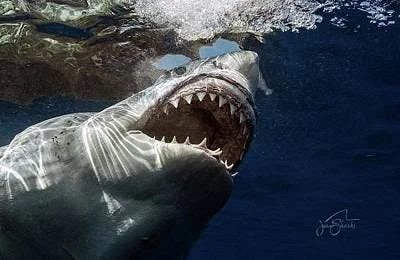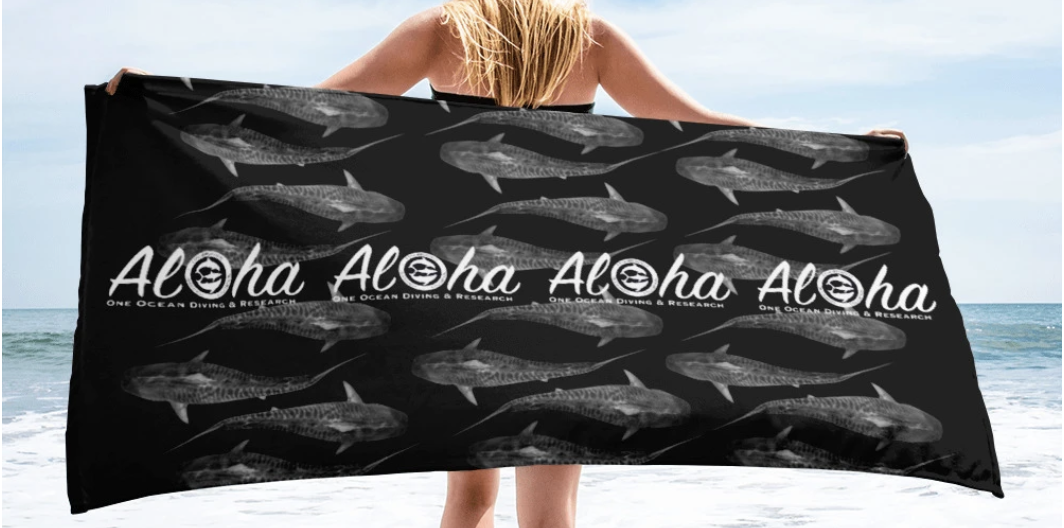When taking people into sharks’ natural habitat, many of whom for the first time, the One Ocean Diving crew tends to hear misconceptions about these animals daily.
“I think the most common misconception is that ‘If I’m out surfing a shark is going to eat me,’” said Mariah Meyer, a shark safety diver, “which is not not true, but the likelihood of that happening is so slim.”
At the One Ocean office, most of the initial customer questions fall into this category. What is the safety record? How often do people get bit?
The answer is simple. 100%--no one has ever gotten bit. A lot of that has to do with the extensive training the divers go through. But also, no shark is the mindless killer many seem to think they are.
In fact, sharks are aware predators that are constantly searching for other aware predators in the water. It’s hard to ambush something that is focused and combative. Sharks are seeking to maintain their social hierarchy and have learned how to spot potential threats to it. Sharks can hear a bird splash on the surface a mile away and can see about as far as humans. So, posture, focus, and behavior in the water will alter how sharks behave around you.
Shark culling efforts globally—wiping whole populations of sharks so more people are comfortable in certain areas—implies that some people think they would be safer if sharks didn’t exist.
This is simply not true. Sharks maintain healthy fish populations by eliminating the slow, weak, and sick of the school. Since 70% of the earth’s oxygen comes from the sea, sharks are vital in keeping ecosystems across the globe healthy which in turn benefits humans’ overall well-being.
While shark attack statistics are a constant regurgitant, it seems news stories sensationalizing attacks gain much more retention. People are less likely to die from a shark than by not only a dolphin, but also their pet dog, significant other, the car ride to their shark dive, the boat ride out of the harbor, or two lightning strikes.
“You’re more likely to die from a coconut hitting you on the head then to get bit by a shark,” Mariah said, “which is crazy.”
While less than ten people are killed by sharks annually, the recorded number for shark deaths by humans is 100,000,000. Assuming most shark deaths occur off any census, this could put the actual number well over 200,000,000.
The main reason for this is shark fin soup, but bycatch and culling, as well as other shark products, play a major part as well. Shark meat can be found in many brands of pet food. Squalene, shark liver oil, lives in many cosmetic products.
Sharks are much more often killed than discovered dead. So, that shark-tooth necklace you found in the gift shop? If it’s white, the shark was likely killed for its teeth. If it’s brown, or fossilized, it was likely found.
Another often-heard misnomer is that human blood gives sharks cravings, and they can smell a drop from miles away. In truth, they can smell it in about an Olympic-sized pool, still pretty impressive, and it does not make them want to eat people.
A common analogy One Ocean divers use is to imagine walking down the street and catching the scent of a food vendor. It will likely make you hungry. But if you enter a Bath & Body Works, you will smell perfume or scented lotion, maybe even find it pleasant, but you won’t crave drinking it.
Finally, there must be plenty of sharks, right? Well, if the shark-death statistics didn’t already spoil this one, no.
The Marine Mammal Protection Act was established in 1972 to prevent marine mammal species from declining beyond the point where they ceased to be a significant functioning element of the ecosystems they take part in. Since it was enacted, no marine mammal species has gone extinct in U.S. waters. The act has also stopped the decline of many marine mammal populations and have led to the recovery of several, such as humpback whales, gray whales, gray seals, and California sea lions.
Unfortunately, there is no such widespread protection for sharks. Since 1972, the general population of sharks globally has dropped by up to 90%, putting many individual species on endangered lists.
Being aware (as if you are in the water with sharks) of what you are purchasing can make all the difference. Buying fish from a local market as opposed to commercial fisheries, avoiding shark products in general, and also—swimming with sharks! Supporting a shark tourist industry proves even greater value to their presence in some areas.
Take it from someone who swims with sharks every day:
“People tell me that I’m going to get bit by a shark and die, which, first of all, is terrible thing to say to someone, so please don’t say that to people,” Mariah said. “Second of all, if the shark wanted to kill me, it would. If it wanted to bite me, it would. But they don’t. I am continuously in the water with these animals day after day, and have been 100% safe.”





